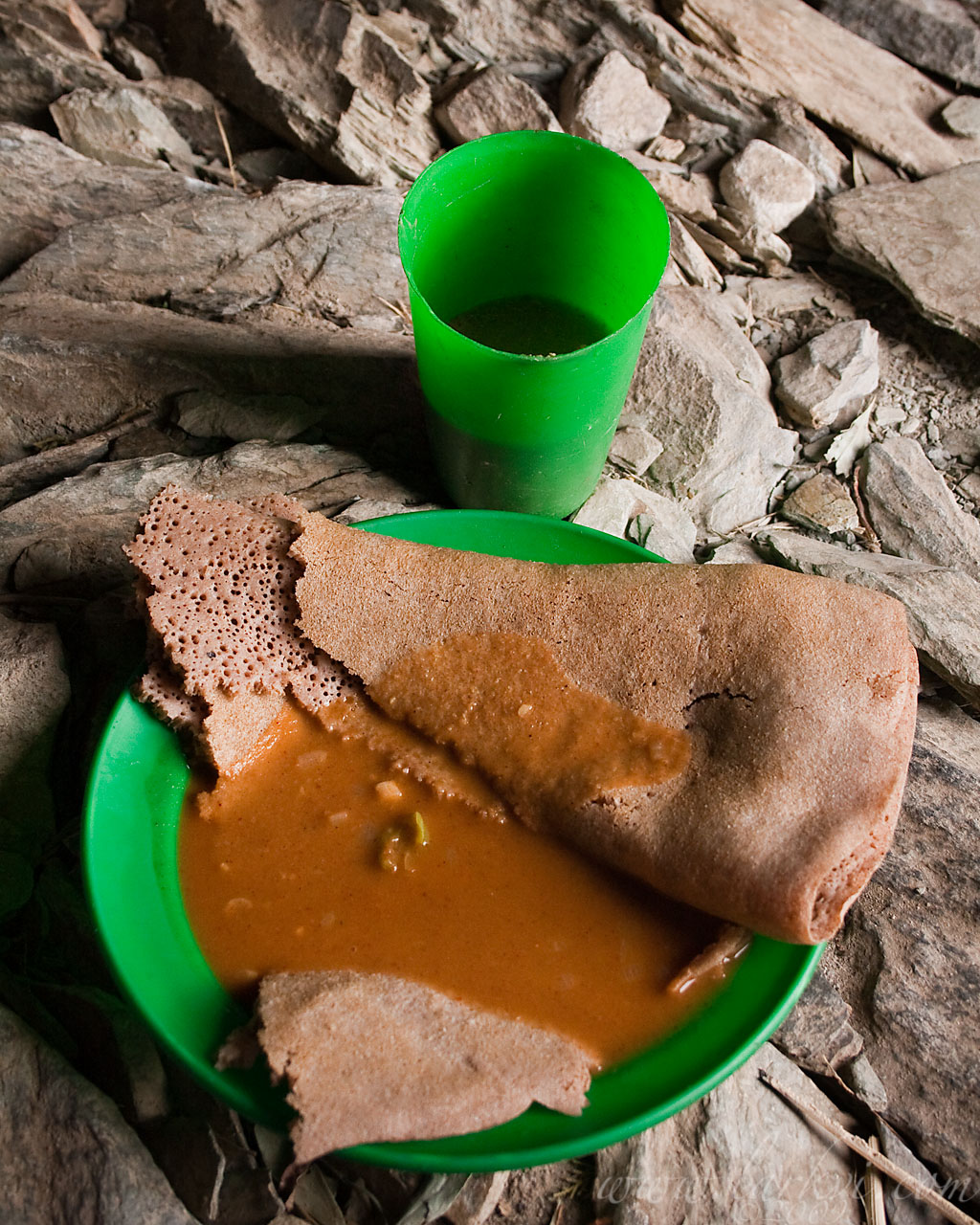Bags from various places hold legumes on display in the old market area of Mek’ele, capital of Tigray. Legumes are greatly consumed during the fasting season, and an important part of the diet year-round, as people fast on vegetables at least twice a week in the Christian parts of the country.
Tag: Food
Fasting Meal, Bet Ammanuel Maako, Negash, Tigray, Ethiopia, April 2009
During the fasting season (which is two weeks longer than Lent in Ethiopia), monks and priests, in addition to abstaining from meat and animal products, do not eat until 9 o’clock (which we foreigners would call 3PM). I happened to be at the church just as services ended, and the priests invited me to share their fasting meal. Exhausted from the substantial hike I had taken from Negash, over three ridges and through two valleys,* I readily accepted.
What is pictured is a very typical rural meal, especially during fasting season. It consists of injera, the stable fermented pan-bread of Ethiopia, made of a grain called teff** with a ‘wot’ (stew) of shiro (chickpea paste). The drink is ‘tella,’ a small local beer made of sorghum and barley, fermented with a leaf called ‘gesho,’ which serves in place of hops.*** The injera is dipped in the shiro and eaten, with the stew serving mainly as a flavorant for the injera, which is most of the meal. More injera (and always more tella) is provided, and one is usually prevailed upon to eat much more than one wishes to. A simple and nutritious meal.
That said, I am getting rather tired of injera.
*There was, of course, an extremely moderate road to the monastery which left the main road very near to my starting place, but which I could not see when I ventured to walk to the church, which is on an imposing height, standing out from the neighboring valleys.
**Almost unique to Ethiopia, teff is a cereal grain very high in both protein and iron. The tiny seeds are easily beaten off the stalk by rain, which contributes somewhat to Ethiopia’s prone-ness to famine (a larger factor is the gross overpopulation of the country, which has grown over 120% since 1960.)
***But is nowhere near as good. One foreigner describes tella as ‘looking like muddy lake-water and tasting much the same.’ That said, this tella was significantly better, though rather full of detritus.


